On August 2, The Skies Will Darken For 6 Minutes-Earth’s Longest Total Solar Eclipse In A Century Is Coming in 2027!
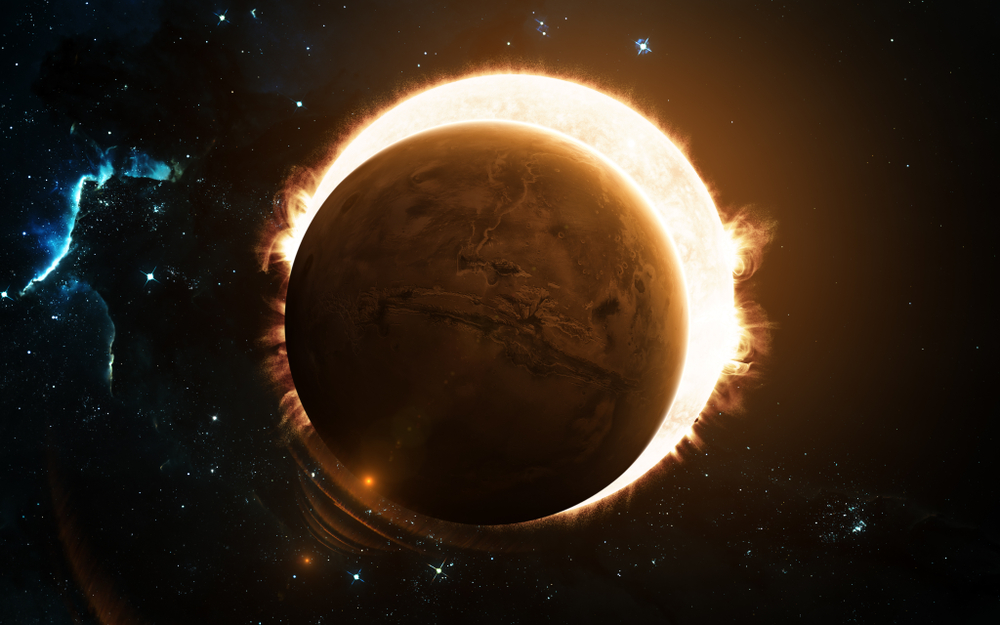
Something extraordinary will happen on a summer day in 2027. Something that will stop people in their tracks, make them cancel meetings, book international flights, and gather in massive crowds across three continents. Something so rare that you won’t see it again in your lifetime.
On that August afternoon, day will turn to night in the middle of summer. Stars will appear in broad daylight. Temperatures will plummet. Animals will behave strangely. And for more than six minutes, millions of people will witness one of nature’s most spectacular displays.
What could possibly create such drama? What event draws astronomers, photographers, and curious souls from around the world to remote locations? What phenomenon has the power to unite strangers under a darkened sky, sharing gasps of wonder and tears of joy?
Mark your calendar for August 2, 2027. On that date, Earth will experience something truly magical – a cosmic dance between sun and moon that creates the longest total solar eclipse visible on land in over a century. But this isn’t just any eclipse. What makes this event so special will leave you speechless.
This Eclipse Is the Ultimate Cosmic Jackpot
Most total solar eclipses tease viewers with just two or three minutes of darkness before returning to normal daylight. You barely have time to soak in the beauty before it disappears. But August 2027 breaks all the rules. “At a whopping 6 minutes and 23 seconds, totality on Aug. 2, 2027, will be the longest on land since 1991 and until 2114,” making it an astronomical event that defines generations rather than years.
Picture having six full minutes to watch the sun’s corona dance like ethereal flames around the moon’s silhouette. Six minutes to see stars appear in daylight. Six minutes to experience the strangest, most beautiful twilight of your life. While others rush through brief eclipse experiences, you’ll have time to truly absorb every magical second.
Over 88.9 million people live directly in the path of totality – more than three times the number who experienced America’s great eclipse in 2024. Three entire continents will serve as nature’s amphitheater for this cosmic performance. From Spain to Somalia, from Morocco to Saudi Arabia, hundreds of millions will share this moment together.
When Science Creates Magic
What creates such perfect eclipse conditions? Nature rarely aligns so beautifully, but 2027 delivers a cosmic jackpot that won’t repeat for over 100 years.
Earth will reach aphelion – its farthest point from the sun – making our star appear slightly smaller in the sky. Meanwhile, the moon reaches perigee, its closest approach to Earth, appearing larger and more powerful than usual. When a bigger moon covers a smaller sun, totality lasts longer.
But there’s more. The eclipse path crosses near Earth’s equator, where our planet’s surface moves fastest relative to the moon’s shadow. This slows the shadow’s apparent speed across the ground, extending those precious minutes of darkness even further.
These three factors working together create the astronomical equivalent of winning the lottery. The odds of such perfect alignment happening anywhere on Earth are astronomical. The odds of it happening over populated areas with clear skies? Nearly impossible. Yet here we are, invited to witness this cosmic miracle.
The Path Across Three Continents
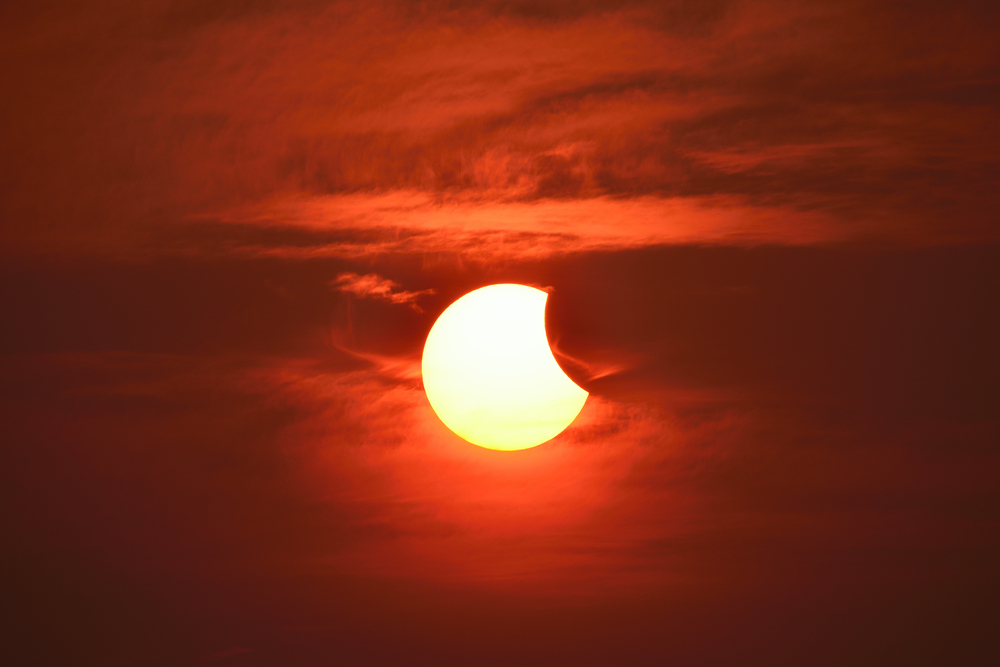
The moon’s shadow begins its earthly journey over the Atlantic Ocean before sweeping eastward across some of our planet’s most fascinating destinations. The path stretches 258 kilometers wide at maximum, creating a superhighway of darkness across three continents.
Southern Spain opens the show, with cities like Cadiz and Malaga experiencing totality in the early afternoon. Gibraltar gets front-row seats as the shadow races across the Strait into North Africa. Morocco, Algeria, and Tunisia each catch pieces of this cosmic performance as it builds toward its grand finale.
But the main event happens further east. Libya and Egypt become the eclipse’s center stage, offering the longest duration and clearest skies. Here, ancient monuments and modern cities alike will witness something their ancestors could only dream of capturing on film.
The shadow continues its journey through Sudan into Saudi Arabia, where holy cities like Mecca will experience totality. Yemen and Somalia complete the terrestrial show before the shadow heads out over the Indian Ocean.
When to Look Up Across the Globe
Eclipse timing varies dramatically across the path. Southern Spain kicks things off around 1:30 PM local time, giving afternoon viewers perfect positioning as totality begins. The shadow races eastward, reaching North Africa during optimal afternoon viewing hours.
Egypt and Libya experience peak totality between 2:00 PM and 2:30 PM local time, when the sun sits high enough to avoid horizon issues but not so high that neck strain becomes a problem. Luxor specifically hits maximum eclipse at 1:02 PM local time, offering 6 minutes and 19 seconds of pure magic.
Saudi Arabia catches the eclipse’s finale, with Jeddah experiencing over 6 minutes of totality at 1:22 PM. Mecca gets 5 minutes and 10 seconds at 1:23 PM. By the time the shadow reaches Yemen and Somalia, afternoon timing provides excellent viewing angles for the eclipse’s grand conclusion.
The Partial Eclipse Spectacle
Even if you can’t reach the path of totality, this eclipse offers incredible partial viewing across vast regions. The moon’s penumbra shadow covers most of Europe, Africa, and western Asia, creating impressive partial eclipses for hundreds of millions more people.
London will see 42% of the sun covered by the moon. Paris gets 52% coverage. Madrid experiences an impressive 86% partial eclipse. Even Dublin, Ireland catches 35% coverage despite being thousands of kilometers from totality.
Partial eclipses create their own magic. As more of the sun disappears behind the moon, sunlight takes on an otherworldly quality. Shadows become crescent-shaped. The air grows cooler. Colors appear more saturated. While nothing compares to totality’s drama, partial viewing still creates unforgettable memories.
What Your Eyes Will Actually See
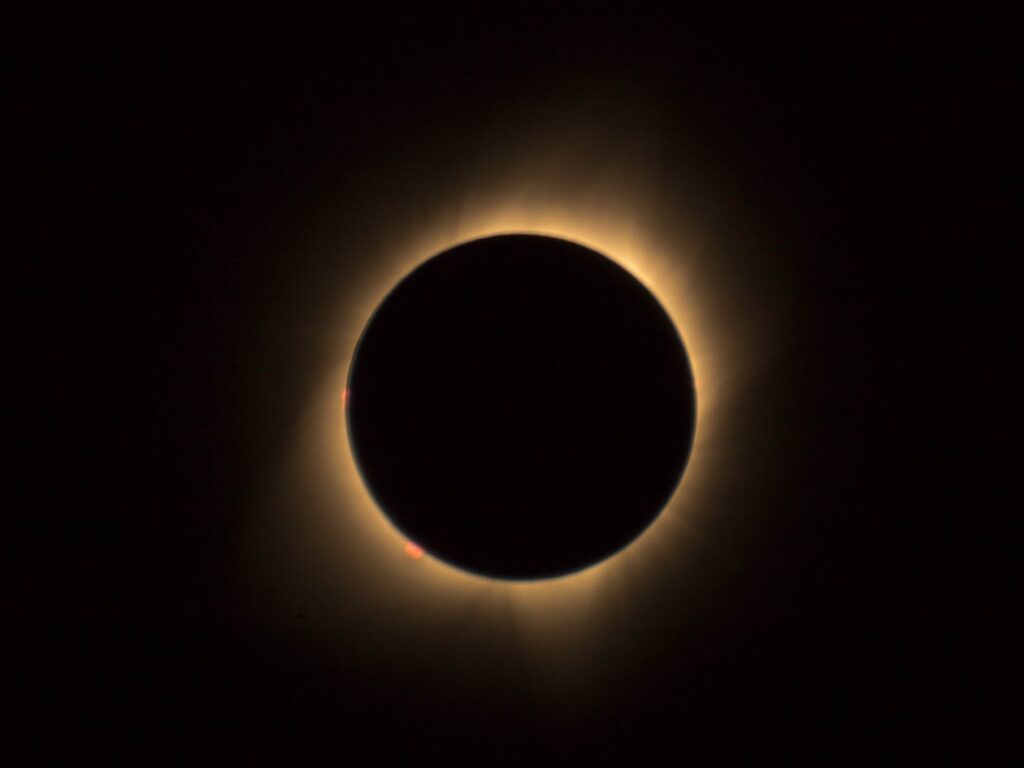
During totality, the sun’s corona becomes visible as a shimmering crown of white flames dancing around the moon’s dark silhouette. This ethereal display changes constantly, with solar flares and streamers creating a light show impossible to capture fully in photographs.
Daylight fades to deep twilight in seconds. Stars appear in the darkened sky – something your brain struggles to process during what should be bright afternoon. The horizon glows with 360-degree sunset colors as the moon’s shadow creates an artificial dawn and dusk simultaneously.
Temperature drops become noticeable, particularly welcome in Egypt’s August heat. The desert heat that typically reaches 109°F (43°C) during August afternoons will drop dramatically during totality, providing blessed relief for viewers.
Animals react strangely. Birds return to roost. Insects fall silent. Dogs bark in confusion. Nature itself seems bewildered by this cosmic interruption of normal daily rhythms.
Plan Your Eclipse Adventure
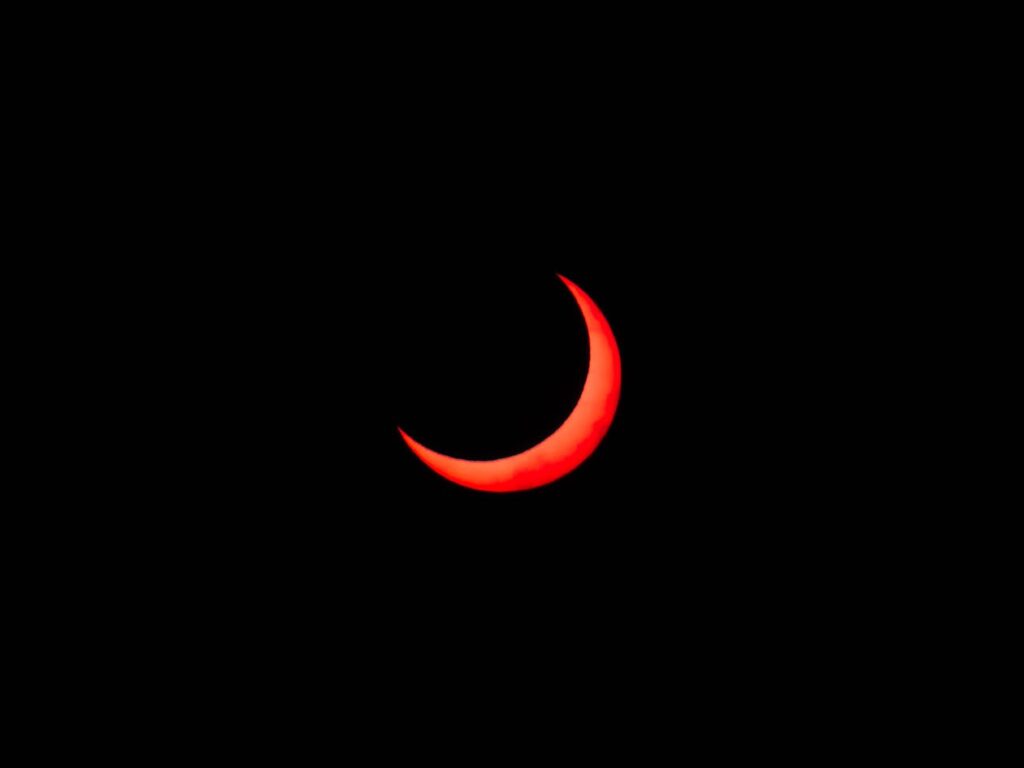
Eclipse tourism requires serious planning. Prime viewing locations book up years in advance. Cruise ships position themselves in the Mediterranean for guaranteed clear skies and comfortable viewing. Egypt’s luxury hotels create special eclipse packages with air-conditioned comfort and expert guides.
Southern Spain and Gibraltar offer more accessible European options, though weather patterns make clouds more likely. Morocco provides exotic appeal with better weather odds than European locations. For guaranteed clear skies, Egypt and Libya remain unmatched, despite the challenging August heat.
Transportation becomes critical. Rental cars, buses, and flights all experience high demand during eclipse events. Smart eclipse chasers book accommodations and transportation immediately after reading articles like this one, not months before the event.
Protect Your Vision During the Show

Eclipse viewing requires proper eye protection throughout all partial phases. Regular sunglasses won’t protect your vision – you need certified eclipse glasses or solar filters designed specifically for sun viewing. Only during totality itself can you safely remove eye protection to witness the corona directly.
Photography demands special solar filters for cameras and telescopes. Smartphone cameras can capture the eclipse, but professional results require dedicated eclipse photography equipment. Many eclipse chasers focus on experiencing the moment rather than documenting it, knowing that photos rarely capture totality’s true impact.
Missing This Eclipse Means Waiting Until 2114
“The August 2027 eclipse, by contrast, will provide up to 6 minutes and 23 seconds of totality at its maximum — making it the longest eclipse visible from land between 1991 and 2114.” Read that date again: 2114. That’s 87 years after 2027.
Nobody alive today will see another eclipse this long over populated areas during their lifetime. Your children might witness it as elderly adults. Your grandchildren will definitely experience it if they live normal lifespans. But for you, this represents the eclipse opportunity of your lifetime.
After 2027, the next impressive eclipse occurs in 2028 over Australia and New Zealand. Then 2030 brings totality to southern Africa. But none of these future eclipses match 2027’s combination of duration, accessibility, and guaranteed clear weather in prime viewing locations.
Your Personal Eclipse Mission: Making It Happen
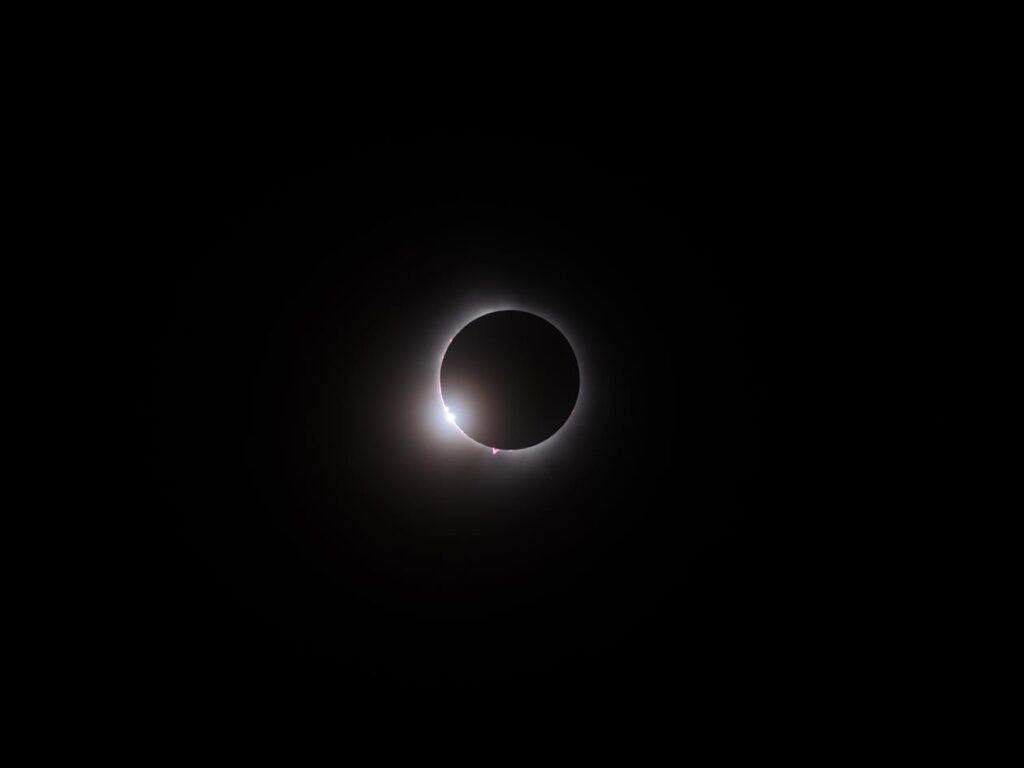
Dreams become reality through decisive action. Eclipse viewing transforms from wishful thinking into concrete plans when you commit to making it happen. This eclipse offers something most astronomical events can’t provide: absolute certainty about when and where it will occur.
Start planning now. Research destinations that appeal to your travel style and budget. Egypt offers ancient wonders under clear skies. Spain provides European convenience. Morocco delivers exotic culture with good weather prospects. Libya guarantees perfect skies for serious eclipse photographers.
Book accommodations immediately. Eclipse hotels fill up years in advance, not months. Airlines add extra flights to eclipse destinations, but seats disappear quickly. Tour companies create special eclipse packages, but the best ones sell out fast.
Consider this investment in wonder. How often do you get guaranteed access to one of nature’s most spectacular shows? When else can you plan years ahead for an experience that will create lifelong memories? What other event brings together science, travel, history, and pure amazement in six minutes of shared human experience?
August 2, 2027 approaches whether you’re prepared or not. The moon’s shadow will race across three continents, offering the longest totality of the century to anyone positioned correctly. The only question is whether you’ll be among the millions who witness this cosmic masterpiece or among the billions who wish they had.
Loading...

